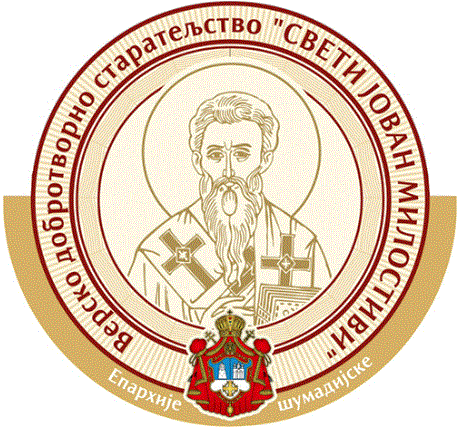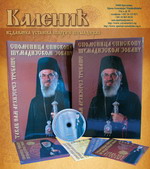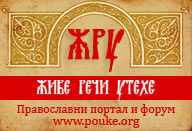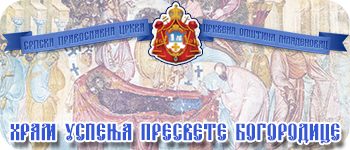Key Words: culture, traditional believer, believer in more narrow sense, pastoral work, the Kingdom of God.
Introductory References
Enthusiasm is a presumption of every human activity so, without exception, is the office of parish priest. Many young and newly ordained priests starts off their duty with the verve, happiness and pure faith all the way down until the concrete parish situation puts them into a serious probation and sometimes even their own faith is at stake. Not so rarely sincere parish priests could be met with their conspicuously inherent feeling of powerlessness, nonplus and nonsense, for in their parish they are faced with many things but least the faith. During the course of baptism, wedding or burial services many of priests would feel themselves more as civil servants, magicians or even more often as parading clowns (see Aračić 2000, 745) but least and most rarely as priests surrounded by Christians, among the people who eagerly wait for the priest to finish ’his own’ as they could in what follows do ’their own’ like bearers of custom and form in which contests they are not interested. These situations question not only priest’s vocation as such but his own human priest dignity as well. He and everybody else there are feeling as if they were trapped and they are all feeling uncomfortably and nonsensically not being able to run away. It is uncomfortable but yet inconceivable or at least still inconceivable.
Such unenviable spiritual status of a priest leads us into the goal of this thesis hiding behind the ambitious headline. It is consisted of an attempt to understand theologically some elements of religionness of the Orthodox citizens of Serbia. Regarding this starting position, analysis will be, in the first place, pastoral and thus should take into account at first the Church and then society. The data that will be used derive from the data of Religionness Research of the Serbian Citizens and Their Standpoint Towards the Process of European Integrations carried out in the year 2010 by Christian Cultural Centre and Foundation Conrad Adenauer based upon representative sample of 1500 examinees.
Thematic Determination
I shall use the notions like faith and believe as artificial in their Evangelical meaning being rooted in self-understanding of the Church (see Πέτρου, 2004, 38-41). They are artificial from sociological point of view for they consider a number of indicators that are being researched separately in empirical researches. It has been mainly talked about five dimensions of churchliness (see Baloban 1996, 405) as follows: acceptance of the truth of faith, religious practice, acceptance of moral concepts of Christianity, living the faith in society and acceptance of the Church structures. I should use the following indicators: religious and confessional self-declarationness, religious practice, i.e. participation in liturgical gatherings and regular intake of the Holy Communion. In that since I could describe the faith as a definite and absolute trust in incarnated and risen the Son of God Jesus Christ Who calls upon all the people to get into the communion of the New Israel that is the Church and together with others foretaste in the Holy Communion the life of the Future Age until the Christ’s second coming. Or should I define faith by the words of St. Paul that “faith is the assurance of things hoped for, the conviction of things not seen” (Heb. 11, 1) from which derives the fundamental characteristic of faith that it is turned towards the future things and thus has eschatological character.
The notion of culture I shall use in its sociological meaning as “the way of life of an individual in society or social groups” (Giddens, 2007, 22), as a common context we live in and where we understand each other and cooperate.
By traditional or cultural believers I should understand those who keep in touch with their Church in a smaller or bigger intensity (gradatory religionness) but who are partially or wholly lacking in some of cited elements of faith which is in most churchliness. It is not possible to detect in them eschatological orientation but rather determination towards the past with the elements of natural religionness and thus religionness form the previous period of spirituality. Regarding our Serbian Orthodoxy such type of spirituality is based upon the spirituality of the 19th century.
The category of nominal Christians whose touch with the Church is narrowed on mostly two rites of baptism and funeral, I shall not take into observance in this analysis.
Traditional Believers throughout History
Traditional believers in a society could be created only by the major religion, especially the state religion and thus through a lengthy delivery of time where inculturalization of certain religious values takes place. Of such kind of Christians we can talk about only after the 4th century AD. Anyhow in the previous period we can detect indicators of such behaviour among the not disciplined ones ore in those who provoke disorder as the Canonical tradition name them.
“If any bishop, or presbyter, or deacon, or any of those who are enumerated in the list of the clergy, or a layman, has no very grave necessity nor difficult business so as to keep him from church for a very long time, but being in town does not go to church on three consecutive Sundays - three weeks - if he is a cleric let him be deposed, but if a layman let him be cut off”.
The cited canon 80 of the Quinisext (Trullos) Council in 691 AD which itself repeats the older canon 11 of the Council in Sardica (modern Sophia, Bulgaria) in 343 testifies but also determines and sanctions the extent of the Church discipline. The one who has no very grave necessity to prevent him to come to church for three weeks should be deposed if a cleric of any ranking, but if a layman let him be cut off from the Church i.e. the Holy Communion. The Church life in general, especially sacramental, has its own internal logic that is being manifested by outward order. To that effect baptism performs the turning point in the Christian life. The condition for baptism was repentance i.e. renunciation of the previous way of living, while the preliminary faith was the answer to God’s calling. The catechumen would begin the period of catechization i.e. preparation for baptism. On the Paschal night the christening would come to pass as a new birth and sacrament of entering the Church. The newly baptized thus became a member of the God’s People (layman), festally entering the Eucharistic gathering, and on Easter they would receive the Holy Communion for the first time along with their new brothers and sisters, in order to continue with deepening the faith by participating in the sacramental life of his local Church. The whole process implies sincereness and conviction i.e. faith, so that for the Early Church but also to the present day, it was hard to imagine that somebody willingly secludes themselves from the Eucharistic gathering. In the mid second century the Holy Martyr Justin the Philosopher describes in his First Apology gathering that occurs on the “day of “sun” in one place by all who live in towns and villages…” (1985, 192). This gathering in one place is a principle while absence of unjustified reasons is subject to “curing”.
The fourth century, the Edict of Milan, the conversion of Constantine, proclamation of Christianity as a state religion by Theodosius, are the new and decisive points in further development of category of traditional believers, for they attach yet another, furthermore, decisive element which is a social benefit that normally produces hypocrisy. Throughout the centuries hypocrisy has been the greatest and the most dangerous opponent to Christianity. Christianity is continuously seeking an effort; ceaselessly filling the form by contents (Schmemann 1994, 229). Every relinquishment of the effort means supposition of the form to the contents, meaning magical, cultural approach and points out the comeback into the state of natural religion, natural paganism, believing in the form and rite itself, a ritual which like a shadow follows Christianity and will follow it until the last day. The Church has clearly understood this danger throughout the centuries and has been battling it in the way that was spotted in canon 80 of the Trullos Council and that is to constantly emphasize what is right and what is an exception. She has never rejected any of those categories of the believers or the men of little faith, but never did She bring all kind of believers onto the same level, except in the last few centuries. She has clearly pointed out the sins which, in one hand, separate one from the Church where they can come back exclusively after a sincere repentance, and they are called grave sins – murder, adultery and apostasy. On the other hand, the sin regarding practicing the Church life is the already mentioned extent of absence from Liturgy and deprivation from the Holy Communion for three consecutive weeks. After that period of time the faithful has willingly excommunicated himself from the Church.
The changes and negligence of these essential attitudes emerged, I presume, in the period of irregular parish Church life (16, 17 and 18 century) and switching the accent from Evangelical faith and Church believers (who are certainly a minority) onto conventional faith and traditional believers. The 19th century was a culmination of such type of spirituality. However, the 20th century brought new, first of all, theological streams in the East as well as in the West. Theology, according to the words of Fr. Georges Florovsky, comes out of the “Babylonian captivity” and the faith as ontological category, as a fact of life and essential personal orientation, is yet again in the foreground. Such faith, being Evangelical, is indispensably manifested by regular churchliness and regular receiving of the Sacraments.
This macro-historical observance of the spiritual types has its huge insufficiency. It is hardly correct in its details but it is so in its characteristic essential emphasis. Most of our parish, first of all, urban churches in the last two decades have a thin shaped but yet solid Eucharistic gathering consisted of the believers who are, following their faith, increasingly distinguished from traditional believers. It does not in the least mean that the “interior” is ideal but the “exterior” is bad, but the Church distinguishes her primary concern and what is happening inside her, from what is, for the Church, secondary and occurs outside her.
Faith Marked in Numbers
Alongside of all specificities, according to research results, the Serbian citizens religionness shows, especially during the last two decades, convergence to and fitting in the global European tendencies. “Roughly speaking 30 per cent of the Europeans is still relatively devoted to their churches, the other 30 per cent live their lives almost entirely outside their homeland. Where is the middle group”? This is the question of the English sociologist Grace Davie (2005, 173).
Let us take a look at the results of the latest research done by the Christian Cultural Centre and Conrad Adenauer Foundation, comparing them, where it is possible, with the results of the European Value Research in Serbia of 2008.
Self-declared religionness – I believe there is God – 63,3 per cent; the European Value Research – 80,5 per cent.
Regardless of whether the examinee is or is not a churchgoer they can still think of themselves that they are: religious person – 76,8 per cent (ChCC).
The Orthodox Confessional Identification – 78,3 per cent, the European Value Research – 86,7 per cent.
|
The examinee can regard themselves as: |
The Christian Cultural Centre |
|
Convinced believer who accepts all the faith’s teachings |
27,2% |
|
Religious, but does not accept all that their faith teaches |
17,1% |
|
Traditional believer, participates in the rites, respects the habits but is not active in their religious community |
36,9% |
Indicators of Religious Practice
|
Frequency of churchgoings |
The Christian Cultural Centre |
The European Value Research |
|
Several times per week |
4,1% |
1,6% |
|
Once per week |
8,7% |
5,8% |
|
1-2 times a month |
16,2% |
13,8% |
|
Frequency of attendance the Sunday Liturgy/Mass |
The Christian Cultural Centre |
The European Value Research |
|
Ordinarily |
9,8% |
|
|
1-2 times a month |
7,3% |
|
|
Several times on the great feasts only |
40,9% |
|
|
Never |
42% |
The examinee takes the Holy Communion: yes: 36,7 per cent; no: 40 per cent
As far as we would like to emphasize some of the indicators in order to forming a general illustration, it would be as follows:
Participating in Liturgy, concluding with 1-2 times a month, which is the bottom line – all together 17,1 per cent; several times a year – 40,9 per cent which would correspond to the category of the traditional believer, and never - 42 per cent – nominal Christians.
Convinced believer who accepts all the teachings of their faith – 27,2 per cent, traditional believer – 36,9 per cent.
Wishing to make an impression, not conclusion, from this data that will be certainly yet to analyse, I can say that, regarding the category of believers as we defined it, we should not be unsatisfied. About 20 per cent of examinees who we can treat as believers in the narrow sense of the word, measuring by the ecclesiological criteria, is a big pre cent. The everyday experience speaks of a much less percentage. But what is to be emphasized is that an improvement is seen just in this category and it could solve the issue of revitalization of religionness in Serbia. It is reality in the sense that Mirko Blagojevic points out, which is not spectacular but visible and measurable in the growth of participation in the Liturgical life of the Church (2009, 105).
Break Up With Tradition
Let us come back yet again to the traditional believers and their perspective in the future. So far as one does not observe confessional trends in Europe on a long run, permanent growth is only marked by non-belonging to any of the confessions. “As far as one more precisely observes the relations in the West, the impression is that there is no a planned suppression there but rather spontaneous erosion of the Christian traditions” (Kaufmann 2003, 9). The faith is less and less present in Europe, not because the atheism is prevailing but she believes less in a traditional way. Believing without belonging as it would stress Grace Davie.
According to Daniel Hervieu-Lèger the Western societies are „momentary societies“, societies with a short memory in general, and thus with a short religious memory too. As this very influential sociologist of religion considers it, this happened due to weakening of the two crucial institutions that used to be conveyers of a collective conscience in the traditional agrarian society and that is: family and parish (Lèger 2000). “Family is loosing much of its functions, upbringing and social ones, while parish is wasting its function of gathering a collective conscience of a local community” (Crpic 2010, 787). The reasons for this are numerous, but the basic one is that in the urban environments even family, never mind the parish, do not function as communities, loosing thus their affective dimensions. Davie supervenes on this thought and sets up several models that could contribute to a better understanding of conveying religious memories into thus described momentary society (more on this Crpic 2010) and it is as follows: a) representative memory, b) unsure memory, c) mediatory memory, d) alternative memory, and e) esthetical, symbolic memory (Dave 2005).
As one can perceive, all interpretations use the notion memory and they are all, with no exception, turned towards the past and to the values from the past, and religion itself is understood from the point of their maintenance and conveyance. One should not put out of their mind that sociologist of religion contemplates religious phenomena from the point of society but not from the point of faithfulness or unfaithfulness in relation to original religious message. In the key of this interpretation role of the priest is to be a professional agent and mediator of all these different, already mentioned kinds of memories. The community expects from him to perform well and professionally entrusted his advocacy role for the use and maintenance of the community itself.
How could we and are we able to concretize these attitudes in our, Serbian life context?
In the Serbian society is still possible to detect coexistence of the elements of pre-modernity, i.e. traditional society, along with modernity supervened by the elements of post-modernity especially among the young generation. In the religious sphere it is manifested as an existence of different mentalities and different types of spirituality at the same place, i.e. in the same parish which makes the pastoral work even more complex. Although the Christianity is always the same in its essential themes, it will be not lived out in a pre-modern and in a society of modernity (see more on this at Jukic 1997, 501-508). In this sense we can distinguish two main paradigms in functioning different social groups, and even the Church communities – authoritarian and democratic.
Authoritarian paradigm is a multi-century way of maintaining and functioning of society by calling upon the reference to certain authorities – father in the family, the monarch, clergy, God in Heaven. These authorities have been, quite often, sustained deep in the people’s conscience. As Grubisic (1996, 362) considers, three features are characteristic for this paradigm regardless of what segments of society it pervades: monolog, monopoly, monolithness. These features use to characteristic for all the traditional societies including also the communistic reign.
Democratic paradigm is the result of modernization of society that has been lost in our country whet the communists came to power, and after the 90s continued to this day. Its characteristics are the dignity of the human personality, dialogue, pluralism and so on. It is interesting that Grubisic (1996, 362) called authoritarian paradigm naturally-religious, while the other one a Christian, although it is usually considered other way round. The process of modernization leads to the dominance of the individual over society, the individual over collective, which are all manifested in religion as well. Individual, free choice of all has to do outweigh over the traditional elements of belonging. The societies of modernity are therefore called post-traditional societies (Giddens 1998, 105 and on) just because this moment of free choice can no longer rely on tradition.
After these general indications, I can say that in our country the state of religiosity, or shall I now, more appropriately, use the term faith, developed in a similar way. Those faithful in the narrow sense, whose number is small, because voluntariness can never be comprehensive as coercion, but is growing though, and their identity in each, mostly urban parish are such convinced Christians, who by free choice practice and live their faith in democratic paradigm. With traditional Christians, in addition to the characteristic element of spirituality in the past, usually lacks this crucial element of personal choice and commitment. In terms of this development of modernity that extends into post-modernity, it seems to be less and less space for traditional believers and they will probably move either to nominal believers or to the faithful. Besides, there are fewer priests who are willing to be the bearers and transmitters of national, folklore and common. They want to be priests of the living Christian communities, not the agents of the past. Their faith is seen as facing the eschaton and not the past. On that route tensions are already happening, and is possible that they also deepen and intensify, because such an attitude of priests can be experienced by traditional Christians as a betrayal of Orthodoxy, Serbian pride, and so on. But otherwise the Church would be in its fullness the victim of such traditionalistic but lifeless Christianity. Traditional believers, in any case, remain a problem and challenge for pastoral activity.
Religion and Culture:
Reconciliation before the Danger
Neither a theologian nor a sociologist of religion is the prophets. It is impossible to foresee how and where will the societies and within them our Serbian society, move with a respect for the sense of humour shown off throughout the history where the events happen just the way nobody expects. My question, to which the answer will also serve the conclusion of the experiment, is as follows: can the religions and cultures, in the form they have existed for centuries, reconcile the danger of disappearance of both, after all? A positive answer to this question, not as an option but as an imperative, gives us Marcello Pera in his book “Why do we need to be called Christians” (2010)? Severity of the author’s opinions and contributions is covered by the letter of the current Pope Benedict the XVI. The author speaks about reconciliation of the two, for more than a century bitter enemies – Catholicism and liberalism (see more on this at Jukic 1997, 369-395) before the danger of the third one which is post-modernity, which with its relativism and narcissism threaten, as it seems to some, to destroy the very society and certainly to break definitely the so far recognised links between Christianity and culture, crossing and stepping outside the context of some kind of Christian culture. “For those less than 35 years old, it seems that the Church has lost its all credibility” (Davie 2005, 75). In essence, Pera, like many other authors determine a serious crisis of European societies, which is an expression and manifestation of post-modernity, and then in the absence of all other means one lays their hands on reaching back Christianity from which it is “expected actions to stabilize the cultural and moral landmarks” (Kaufmann 2003, 77).”Europe is in a state of transition, the system is lost and there is no adequate substitute” (Davie 2005, 173). For this reason, Pera believes that liberals have to declare themselves as Christians but, at the same time, it does not necessarily mean that they should believe (2010, 56).
“Different names help us to distinguish: Christians by faith are some, while Christians by culture are something else; or the followers of Christ and those who admire the Christian message; or simply believers and laymen. They disagree with each other, but they both believe, in a technical sense they have a religion” (Pera 2010, 58).
And yet again, but in a different way, we reached the cultural believers (see Zoumboulakis 2002 and 2010). This time as a political necessity. In fact, if Europe calculates to survive the relativism , multiculturalism, Islamic fundamentalism, she should remember her Christian origin, even if it is in political terms. This neo-symphony with the modern state might bring back the impressions of figures and secular power, but it would certainly stop the development of what we marked as the believers by conviction. Christ did not promise his followers worldwide fame, but rather life’s difficulties along with the promise that He will remain with them until the end of time. And when He comes back will He find the faith among people or merely custom and tradition?
BIBLIOGRAPHY
- Свештени канони Цркве, Београд 2005
- Благојевић, Мирко, „Ревитализација религије и религиозности у Србији: стварност или мит?“, Философија и друштво 2/2009
- Јустин, философ и мученик, Απολογηταί, ΕΠΕ, Θεσ/νικη 1985
- Пера, Марчело, Зашто се морамо звати хришћани, Београд 2010
- Шмеман, Александар, Историјски пут Православља, Цетиње 1994
- Aračić, Pero, „Pastoralne vizije i pastoralna usmerenja“, BS 70 br. 3-4, 2000
- Baloban, Josip, „Stupnjevita crkvenost današnjeg kršćanina: realnost i opasnost“, BS 66 br. 2-3, 1996
- Črpić, Gordan, „Crtice o stanju i perspektivama svećenika u društvu“, BS 80 br. 3, 2010
- Giddens, Anthony, Sociologija, Zagreb 2007
- Giddens, Anthony, Последице модерности, Београд 1998
- Grubišić, Ivan, „Hrvatski katolicizam: vjera ili običaj?“, BS 66 br. 2-3, 1996
- Davie, Grace, Religija u suvremenoj Evropi, Zagreb 2005
- Jukić, Jakov, Lica i maske svetoga, Zagreb 1997
- Kaufmann, Frany – Xaver, Kako da preživi kršćanstvo?, Zagreb 2003
- Hervieu-Lèger, Daniel, Religion as a Chain of Memory, New Brunswick – New Yersey 2000
- Ζουμπουλάκης, Σταύρος, Ο Θεός στη πόλη, Αθήνα 2002
- Ζουμπουλάκης, Σταύρος, Χριστιανοί στον δημόσιο χώρο, Αθήνα 2010
- Πέτρου, Ιωάννης, Χριστιανισμός και κοινωνία, Θεσ/νικη 2004

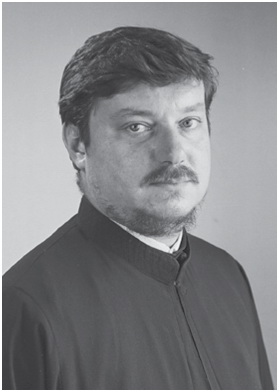 Abstract: Upon contemporary social researches the author considers the very concept of traditional believer along with a possibility of classification within this vast group of the Church members. In what follows, the relation between traditional believers and the believers in more narrow sense is being analysed from pastoral prospect. Is it complementary and hence can we talk about faith and culture, or they are only magnitudes that exclude each other and thus make tensions and serious problem in pastoral work and Church life, making in that way the results of empirical research of religionness relative? The problem is detected when the believers turn themselves towards the past, while the believers in more narrow sense do so towards the future, it is to say towards the Kingdom of God, employing the pastoral work to reorient the first group.
Abstract: Upon contemporary social researches the author considers the very concept of traditional believer along with a possibility of classification within this vast group of the Church members. In what follows, the relation between traditional believers and the believers in more narrow sense is being analysed from pastoral prospect. Is it complementary and hence can we talk about faith and culture, or they are only magnitudes that exclude each other and thus make tensions and serious problem in pastoral work and Church life, making in that way the results of empirical research of religionness relative? The problem is detected when the believers turn themselves towards the past, while the believers in more narrow sense do so towards the future, it is to say towards the Kingdom of God, employing the pastoral work to reorient the first group.
